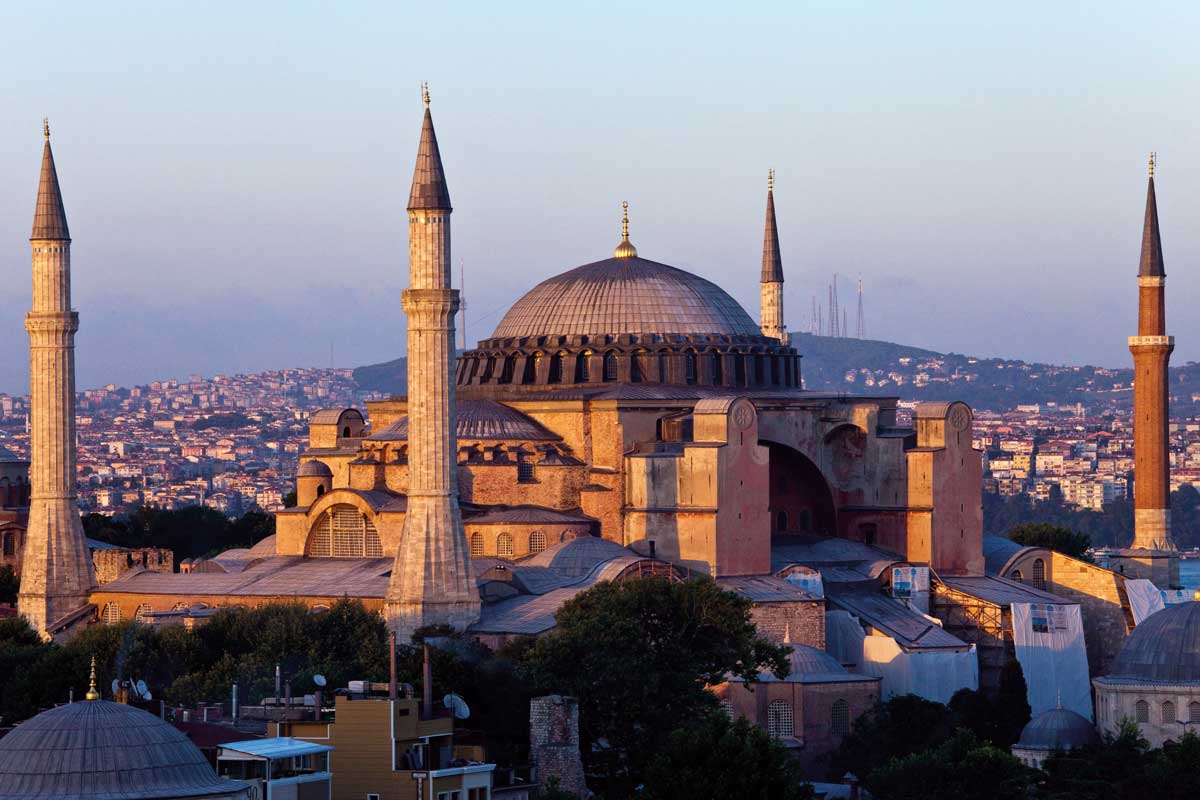Museum or Mosque? | History Today - 5 minutes read

Mehmet the Conqueror converted the cathedral of Hagia Sophia to a mosque after the conquest of Constantinople in 1453. It was a symbolic move. The conversion involved minimal physical transformation and even the name remained the same: Ayasofya Camii. Since its construction in the sixth century, this building has accrued meanings that have nothing to do with its physical form, very little to do with its history and even less to do with religion.
Half a millennium after Mehmet’s conversion, Gazi Kemal performed a similar transformation: as he secularised the Turkish state, he secularised Hagia Sophia. On 24 November 1934 – the same day that he was proclaimed ‘Atatürk’ (Father of the Turks) – the Turkish Council of Ministers decreed that the building should be turned into a museum:
Due to its historical significance, the conversion of Ayasofya mosque … into a museum will please the entire Eastern world; and its conversion to a museum will cause humanity to gain a new institution of knowledge.
This fitted Atatürk’s mission to reshape modern Turkey as part of Western civilisation, but there had been regular calls for reopening Hagia Sophia as a church for much of the previous half-century. An 1877 article in the New York Times began: ‘How soon the crescent over the minarets of St Sophia will be replaced by the cross, or how soon the minarets themselves will be entirely swept away ... no seer has foretold.’ A 1912 article in the same newspaper predicted that the Bulgarians, advancing on the Ottoman capital, would soon plant the cross on top of St Sophia. A decade later, the Greek megale idea had the conversion of Hagia Sophia as one of its priorities. Across Britain, ardent philhellenes formed the St Sophia Redemption Committee, its manifesto published in 1919.
The idea of returning Hagia Sophia to Christian usage epitomised European aspirations for Istanbul. Following the end of the First World War and the dismantling of the Ottoman Empire, it seemed possible. In 1921 a service was held in St John the Divine in New York with Orthodox and Episcopal clergy praying in six languages (Hungarian, Greek, Arabic, Russian, Serbian and English) for its restoration as a Christian sanctuary. The cathedral was filled to capacity, with many turned away. Similar services were held in Washington DC, St Louis, Detroit, Newark, Philadelphia and Chicago. Almost all Western commentators expressed the same wish. One wonders if Atatürk’s secularisation of the building was something of a compromise, a defensive strategy when faced with the unified desires of the Christian West. A century later, Ayasofya remains the most popular museum in Turkey.
It might have remained so but for the events of the last decade. In November 2011, the Ayasofya in Iznik was reopened as a mosque. Originally a church and the setting of one of the most important early councils (in AD 787, to end the first phase of Iconoclasm), the building became a mosque with the Ottoman Conquest. But it had fallen into disrepair. For decades it functioned as a museum, until a loophole in the law was found: it had never officially been a museum, allowing for its conversion. Reaction has been predictable: academics and secularists have decried the move, Islamists are delighted. As one local commented: ‘Next, I want to see it happen in the Ayasofya in Istanbul.’
The conversion of one Ayasofya has spurred efforts for the reconversion of another. On 29 May, the anniversary of the Ottoman Conquest of Constantinople, thousands of devout Muslims pray outside the Istanbul monument, shouting, ‘Break the chains! Let Ayasofya Mosque open!’ As their leader Salih Turhan explained in 2012, ‘Keeping Aysofya Mosque closed is an insult to our mostly Muslim population of 75 million. It symbolises our ill-treatment by the West.’ Meanwhile, the Free Agia Sophia Council of America continued to lobby US Congress to support the reopening of Hagia Sophia as an Orthodox church.
In 2013 it was announced that Ayasofya in Trabzon would reopen as a mosque. The 13th-century building was a museum and the reconversion seems to have been instigated solely on the basis of its name. A major force behind the conversion movement, Adnan Ertem, proclaimed that of the Ayasofyas in Turkey, five are functioning as mosques, while two are ‘inactive’ (i.e. museums), calling their present owner, the Cultural Ministry, an ‘occupying force’.
Supporting the reopening of Istanbul’s Ayasofya has become the litmus test of the true believer. Debate within Turkey is framed almost entirely in religious terms and the response has been largely religious, too, fuelled by the misperception of Hagia Sophia as a Christian building. Indeed, the majority of responses from outside Turkey have been from Christian organisations. More than religion is at stake, however. Nationalist, religious, or other selective readings of cultural heritage effectively erase historic memory and sever links with the past. One wonders if this is the subtext of the current agenda.
A few recent incidents are telling. The fifth-century basilica of St John Stoudios (the Imrahor Camii) is the oldest surviving church in Istanbul. Destroyed by fire in 1894, its evocative remains have never been properly documented. A parliamentary commission has determined that the basilica should be rebuilt as a mosque.
The Arap Camii, originally the early 14th-century Dominican church in Galata, suffered minor damage in the 1999 earthquake which revealed remnants of its original decoration. Its unique frescoes and mosaics combine features of Italian and Constantinopolitan painting, demonstrating the close working relations of Byzantine and Italian artisans of late Byzantium and the political complexities of the period. The paintings were uncovered and conserved in 2011, but they have been covered again and are no longer visible. One wonders if this is to be the fate of Turkey’s rich and heterogeneous past.
Robert G. Ousterhout is author of Eastern Medieval Architecture: The Building Traditions of Byzantium and Neighboring Lands (Oxford, 2019).
Source: History Today Feed